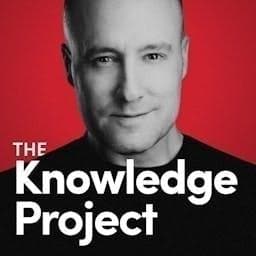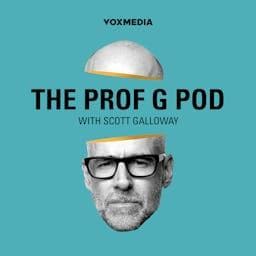Join us for a special edition of The Innovation Show, recorded at Harvard Business School, featuring Scott D. Anthony, Clinical Professor at the Tuck School of Business and co-author of Seeing What's Next with the late Clay Christensen. Scott joins us to discuss his latest book, "Epic Disruptions: 11 Innovations That Shaped Our Modern World."
In this episode, Scott shares insights from his groundbreaking book, Epic Disruptions: 11 Innovations That Shaped Our Modern World. Through compelling historical parallels and modern business cases, he uncovers the hidden patterns that define true disruptive innovation and how leaders can respond with resilience and creativity.
From Henry Ford and the Model T to the fall of Constantinople, from Netflix vs. Blockbuster to the scientific revolution, Scott connects past transformations to today's urgent innovation challenges. He unpacks powerful concepts like emergent strategy, value networks, and the critical role of business models in enabling — or blocking — change.
Whether you're a startup founder, corporate leader, or curious learner, this episode delivers practical, thought-provoking guidance on navigating disruption in real time.
Special thanks to the Harvard Business School Publishing team for hosting us, and to our sponsor Kyndryl for their continued support of forward-thinking conversations on The Innovation Show.
What You'll Learn:
The difference between sustaining vs. disruptive innovation
Why innovation diffusion is often slower than we think
Lessons from the Honda Super Cub and Kodak's collapse
How McDonald's, the printing press, and scientific revolutions disrupted systems — not just products
Actionable frameworks like the ABCs of Dual Transformation
Episode Chapters & Highlights
00:00 Introduction and Acknowledgements
00:22 Introducing Today's Guest: Scott D. Anthony
01:38 Defining Innovation and Disruption
04:10 Sustaining vs. Disruptive Innovation
07:03 Netflix vs. Blockbuster: A Case Study
07:47 The Value Network and Market Dynamics
16:50 Emergent Strategy and the Honda Super Cub
18:37 Gunpowder and the Innovator's Dilemma
23:03 The Fall of Constantinople: A Lesson in Disruption
32:42 The Printing Press: Collaboration and Consequences
35:50 The Slow Diffusion of Innovations
38:24 The Kodak Story: A Tale of Missed Opportunities
44:17 The ABCs of Dual Transformation
50:10 The Historical Impact of the Scientific Revolution
56:04 McDonald's: Revolutionizing the Fast Food Industry
01:05:07 The Persistence of Henry Ford and the Model T
01:09:25 Concluding Thoughts and Reflections
Quotes from the Episode:
"Innovation is something different that creates value... Disruption takes things that were complicated and expensive, makes them simple and affordable, and changes market dynamics." — Scott D. Anthony
"History doesn't repeat, but it often rhymes... The walls that stood for a thousand years collapsed in 47 days. What is your equivalent to the Theodosian Walls?" — Scott D. Anthony
Links & Resources:
Book: Epic Disruptions by Scott D. Anthony
Website: EpicDisruptions.com
Connect with Scott: LinkedIn
Connect with The Innovation Sho
Connect with Aidan: LinkedIn
Tags/Keywords: Disruptive Innovation, Scott D. Anthony, Clayton Christensen, Business Strategy, Corporate Transformation, History of Innovation, Dual Transformation, McDonald's Case Study, Kodak, Artificial Intelligence, The Innovation Show, Aidan McCullen.




































